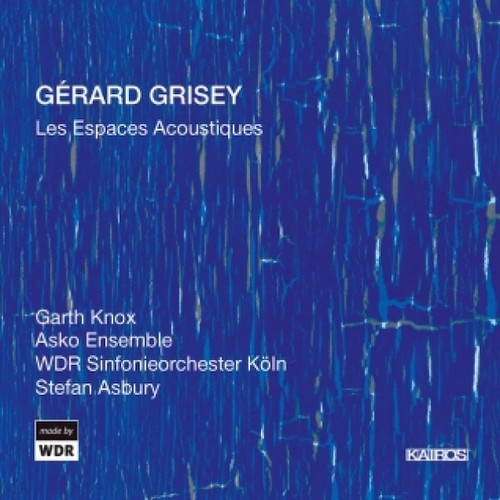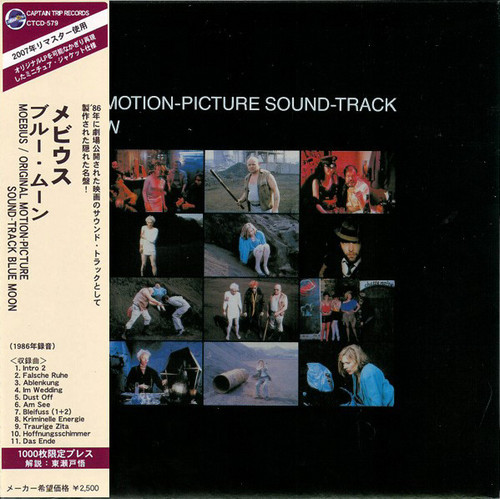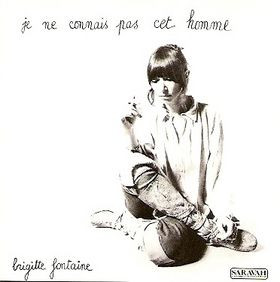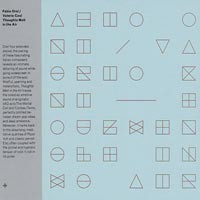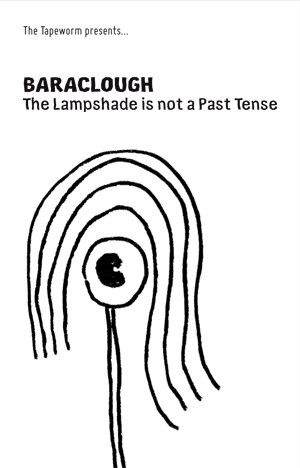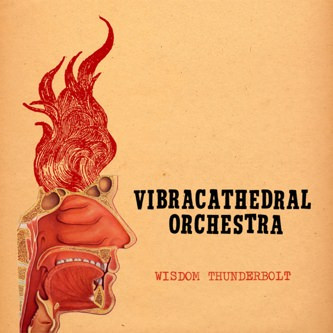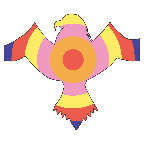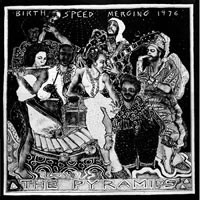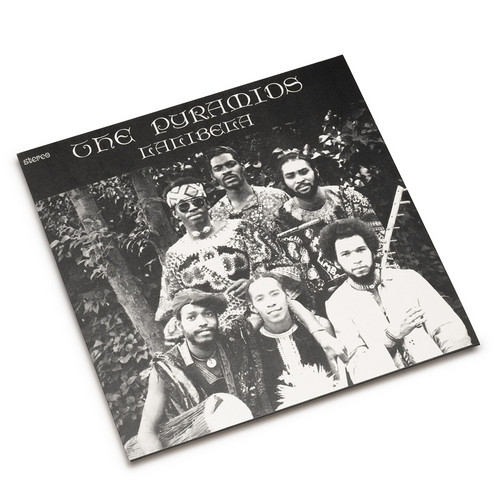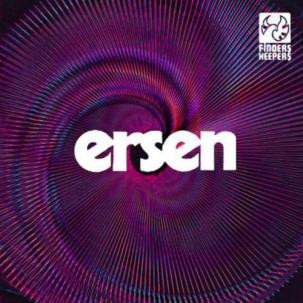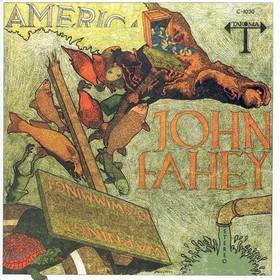Reissues
Les Espaces Acoustiques
Gérard Grisey’s Les espaces acoustiques is a groundbreaking work which defies assumptions about what music “ought” to be. Not for nothing did the composer describe it as “a great laboratory”, exploring the way we listen.The “Acoustic Spaces” cycle, begun in 1974 and completed in 1985, consists of six instrumental works that may be played consecutively, since each acoustic space extends the previous one. The unity of the whole is based on the formal similarity of the pieces and on the two acousti…
Blue Moon - Original Motion-Picture Sound-Track
Original score to the 1986 Roxy Film Production Blue Moon by Dieter Moebius (of C/Kluster/Harmonia/_ & Roedelius fame...). Nice, if somewhat short selection of synth-themes & pain-relieving sonics. Surprisingly low usage of era sound-producing technologies, although they ARE in there (the DX7 ruined E-Music for an entire generation...). 80's Moebius/Roedelius output is only now starting to ripen w/age, no reason not to enhance your personal selection w/a crate or two of this fine ruby port
Discreet Music
Orignal master series reissue: a real masterpiece...after a car accident put Brian Eno in the hospital in 1975, he came out with the idea of creating Ambient music, or music that was essentially to be used as atmosphere. Discreet Music was the first of his ambient experiments and is therefore a landmark recording in addition to being a beautiful combination of tape-delay and composition.
Je Ne Connais Pas Cet Homme
Beautiful duets between Brigitte Fontaine and Areski -- and an album that's filled with loads of short little tracks that stand with some of their greatest work ever! Instrumentation is spare, but incredibly haunting -- a bit jazzy at times, slightly experimental at others -- but always quiet enough to allow the slightly-whispered vocals of the pair dominate the record. There's a strong sense of poetry here -- but without any of the stiffness or pretension that might imply -- and the re…
Vous Et Nous
A brilliant collaboration between these two dark moody French singers -- every bit as great as their classics from the early 70s! Recorded in 1977, with enough material to make up 2 LPs, this set features 33 tracks that slip and slide into each other with cool sounds, spare instrumentation, and amazing vocals that are difficult to describe, but which cut you to the quick once you've heard them! Extremely haunting, with a feel that sounds like the wind blowing through an empty cottage on…
Thoughts Melt In The Air
The Preservation label presents Thoughts Melt In The Air, the second album from the pairing of Italian composers Fabio Orsi and Valerio Cosi. Both Orsi and Cosi have become recognized widely internationally for their prolific solo output and kindred spirits in creating momentous soundscapes that ring with lyrical feeling. Still in his early 20s, Valerio Cosi has released a seemingly endless stream of work that swirls around giddily in a sweep of heady free-jazz (his main instrument is tenor saxo…
Ray Night 1991-1992 Live
First ever CD by this legendary and ultra-obscure Japanese psychedelic rock group. Kousokuya are from Tokyo, have donated some spectacular tracks to the first two volumes of the Tokyo Flashback compilation series on the PSF label, and self-released an extremely ltd. LP in 1991. The band has been around for quite some time; I originally was under the impression they formed around 1984, but was recently informed that an edition featuring Nanjo and Narita from High Rise existed going back to the l…
E-Man
Cassette only - limited edition of 250 copies. Performers : Paul de Casparis, Dale Cornish, Eddie Nuttall. Illustration : Dave 'the cap' Knapik. Baraclough are a London-based trio consisting of a classically-trained musician, a self-taught musician, and a non-musician. With a distinctive palette of woozy electronics, raw and processed recordings, combined with vocals and abstract sounds, Baraclough produce a unique aural aesthetic that is hypnotic yet agitating, intimate yet awkward. Sinc…
Wisdom Thunderbolt
Oh psychedelic-noise fans your saviours have returned! After a three year absence (okay so there were loads of odd limited releases, but no proper albums) they're back with 'Wisdom Thunderbolt' which to my mind one of the collective's strongest offerings to date. You might have caught members of this psych supergroup dotting themselves around the sprawling scene - I know whenever I go to a gig these days I try to spot the Vibracathedral member - it's a bit like a geeky muso's version of 'Where's…
The Queen Of Guess
Masterful, transcendental psychedelia from the mighty Vibracathedral Orchestra, who prove they're capable of making a varied and multifaceted din on this nine-track, seventy-one minute album. The group truly excels on the two long-form pieces (both 'Ramshackle Sunrise' and 'Goodnight Stars Goodnight AIr' hover around the twenty-minute mark), although the shorter tracks reveal the wealth of different instrumental approaches that goes into making up the band's considerable repertoire. It's that ma…
No Earthly Man
Updating canonical Scottish folk tunes is a rather unfashionable niche, placing these songs within the context of modern/alternative rock is an even tougher chore, but it's one that Scottish neo-traditionalist Alasdair Roberts approaches with pluck and somber intensity. Previously with the band Appendix Out, No Earthly Man is Roberts' third album as a solo artist and it is undoubtedly his most difficult to approach. His previous album, Farewell Sorrow, was a collection of joyful, filigreed songs…
Raudive Bunker Experiment
Double LP version: Reissue of the rare LP from 1982 and additional material from various tapes of that period. Includes two long Industrial tracks in the way of Throbbing Gristle and 22 tracks of experimental minimal, comparable to early Cabaret Voltaire or Conrad Schnitzler.All composed and recorded in the early eighties by Andy Wilson, who also played with Bourbonese Qualk, released a book about german band "Faust" and nowadays plays under the name "Sunseastar" and "The Grand Erector". Limite…
The Hour Is Now
An excellent compilation of beautiful early 70s folk tunes from three LPs that that legendary acid-folk hippy-goddess Collie Ryan recorded in 1973, pretty much in Fahey/Basho vein
Birth/Speed/Merging
After their second album, “King of Kings,” the Pyramids relocated to Oakland & reshuffled personnel before recording “Birth/Speed/Merging” in ’76. The most obvious change in the band is the addition of an acoustic bassist, on top of the electric bass they already had. This gives the band a heavier sound at certain points, while other times the bass is strummed like some sort of strange guitar. At the same time, they lost the piano which was used on the second album, which allowed them to return …
King Of Kings
The Pyramids second album, originally released in ’74. The band continued along the same general lines as they did on their first album, but they added a pianist for much of the session, & it somewhat changed the character of the music. In some ways, it seems like a more sophisticated album than “Lalibela,” & by some standards, its probably an improvement on that record – the solos in particular seem more confident, & the percussion has become more intricate & inventive, without loosing a hair o…
Lalibela
the Pyramids first album, recorded in Yellow Springs, Ohio in 1973. It was recorded in Ohio, yes, but band leader Idris Ackamoor grew up in Southside Chicago, & this album was recorded after the core of the band had made an extended trip to Africa, & these facts give a better idea of where this music is coming from. The Chicago thing is happening in that this is definitely informed by the AACM approach, especially the Art Ensemble. The African thing is probably the more important element, though…
Daily Dance
Deluxe vinyl edition of this legendary outta time private press LP, cut by the duo of electric guitarist Doug Snyder and drummer Bob Thompson in Ohio in 1972...Amazing, unique, celebrated, and genuinely rare artifact from Rural Ohio. After stepping out of a Stooges concert in 1971, Doug Snyder and Bob Thompson set up a studio in their kitchen and attempted to record a record HEAVIER than the Stooges. They were completely successful, and the resulting LP, their only release at the time (put out b…
Ersen
Sixteen schizoid slices of Arabesque Funk Rock from the silver-tongued chameleon of the electric Anatolia Pop Movement. Featuring LES MOGUL, ZAFER DILEK, KARDASLAR and members of the BARIS MANCO BAND. "Yo Ersen music is ridiculous dope!!!! I'd love to flip this!!!!!" —Oh No (Stones Throw).
America
Originally released in 1971, this is one of the artistic high points of his career. And yet, for nearly 30 years it was not heard in its entirety, as what was originally intended as a double album was pared down to a single LP. Now, thanks to 4 Men With Beards, the complete double album is available on vinyl for the first time
Tonspuren
This is the first solo album by Dieter Moebius, recorded at Conny Plank's studio and originally released in 1983 on Sky Records. By 1969 at the latest, Dieter Moebius was synonymous with the avant-garde electronic music scene in Germany. He and Hans-Joachim Roedelius formed Cluster, a seminal electronic/ambient duo, while Moebius was also a member of the so-called Krautrock supergroup Harmonia (with Michael Rother and Roedelius), as well as collaborating on various other projects with the likes …
